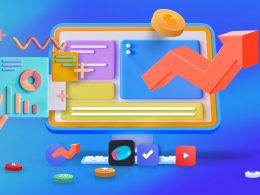It’s impossible to overstate the importance of accounting for e-commerce businesses. You might find yourself in a tight spot, especially if you’re solely relying on Shopify accounting.
While you can use the platform to produce reports showing your total sales, or revenue by region, the functionality is fairly limited, and not sufficient for comprehensive expense tracking. In this case, you have two options – hiring an accountant for your e-commerce business or integrating an accountancy app that will do the legwork for you.
What Is Expense Tracking?
Expense tracking is an invaluable tool which helps you track what you’re spending and how that breaks down into different categories. You need to know your expenses as a fundamental business management metric and use that information to help with:
- Forecasting profits
- Creating a budget
- Calculating profit per item
- Reducing your expenses
- Submitting accounts and tax returns
- Accurate management accounting
Sales figures alone cannot predict your bottom line or whether you’re spending more than you’d like on a particular activity. It’s also vital to anticipate costs to keep track of your cash flow.
Why Is Expense Tracking So Time-Consuming?
The challenging aspect of expense tracking, for many businesses, is that expenses come from multiple sources. You might have a pile of lunch receipts, bills paid via online banking, accounts payable balances, and direct debits–tracking every cent can take hours of manual bookkeeping.
An expense tracking system simplifies the process, so you can:
- Create expense categories so that each cost is allocated a code and you can see how much you spent on what has been outgoing, per month, week, or day (such as entertaining, shipping, platform fees, or utilities)
- Compare expenses to income, monitoring how your costs weigh against your sales figures
- Project expected costs throughout your trading season and be proactive about spotting potential cash flow deficits or periods where you have the opportunity to invest in a new business asset
- Take a photo of a receipt on your smartphone and upload it to your bookkeeping app –this way, you will never lose a receipt or fiddle with manual staff expense claim forms
App-based expense tracking is preferable to manual entry, spreadsheets, or a desktop system because you can access your reports anywhere, any time, and from any device.
What Financial Reports Does Shopify Produce?
Shopify is one of the largest sales platforms worldwide, but the finance reports available are somewhat basic and specific to Shopify. Reports include:
- Sales overview: data on gross sales, discounts, returns, net sales, shipping, and taxes
- Payments overview: a summary of payments received, split into methods
- Liabilities overview: shows you gift card sales and outstanding gift card balances
- Gross profit overview: this page is a snapshot of net sales, costs, and profit that you can filter with a date range
However, things can get challenging, as these reports exclude anything that happens off-platform and solely include the transactions made through your Shopify account (which could be one of multiple sales channels).
How Do Accounting Apps Integrate With Shopify?
A business accounting app is a software solution that combines complex data from all of your sales platforms in one place. Synder offers a range of e-commerce accounting software apps with full Shopify integrations, helping you streamline every aspect of your bookkeeping, expense tracking, and financial management.
Simply select your payment services for Shopify and sales channels, and sync them with your Shopify account. You’ll get automated reporting, real-time expense oversight, and even custom P&L reports to help you make informed business decisions swiftly based on all your crucial data from multiple sources.

.png)




